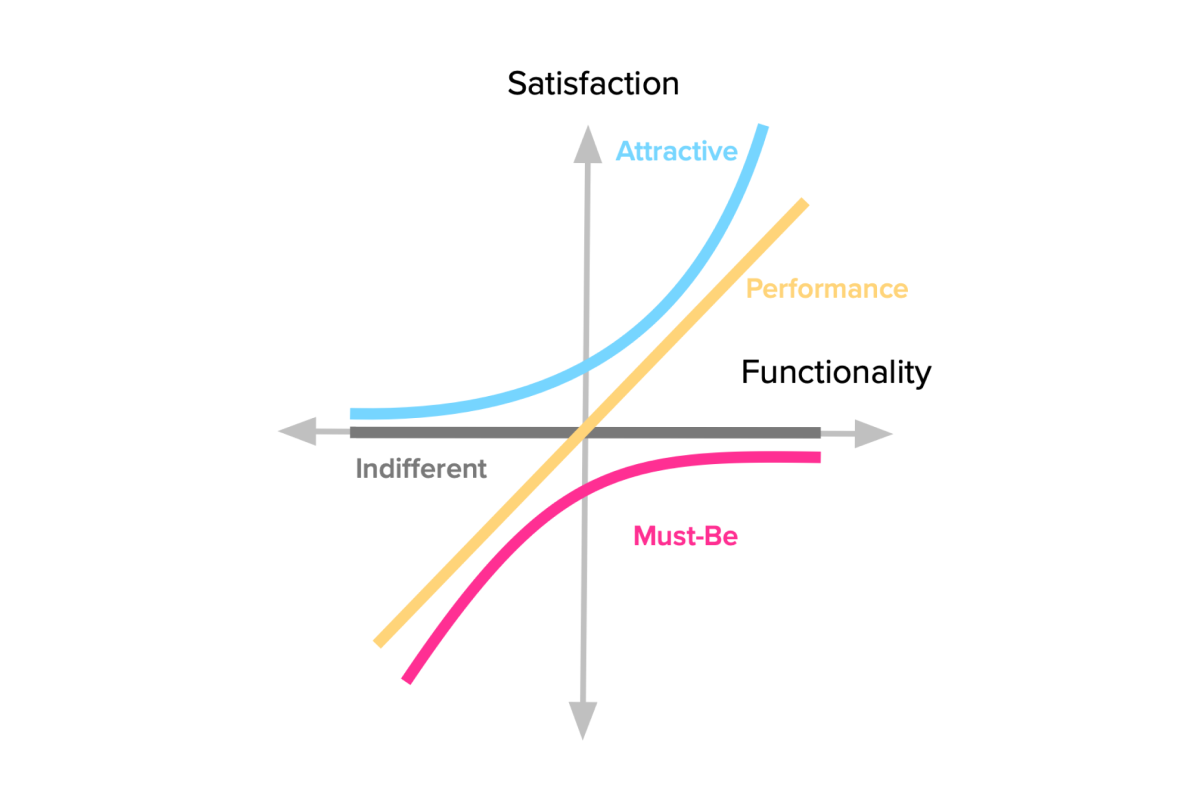
Named after Professor Noriaki Kano, this methodology is designed to categorize and prioritize features based on their impact on user satisfaction.
At its core, Kano Analysis is not merely about identifying what users want; it’s about understanding how different features elicit varying emotional responses from users. By doing so, it goes beyond the obvious and dives deep into the realm of delight, uncovering those elements that can transform a good user experience into an exceptional one.
The Four Kano Categories
- Must-Be Needs: In this category, users expect certain features as a baseline requirement. These are the fundamental functionalities that, if missing, can result in dissatisfaction. However, their presence does not necessarily lead to increased user satisfaction; they are more about meeting minimum expectations.
- Performance Needs: As the performance of a feature improves, so does user satisfaction. These features directly correlate with user preferences; the more you enhance them, the happier your users become.
- Attractive Needs: This is where the magic happens. Features in this category unexpectedly delight users, often surpassing their initial expectations. While their absence doesn’t lead to dissatisfaction, their presence has the power to create a strong emotional connection and foster brand loyalty.
- Indifferent Needs: Little value is placed on these features, and elements which user may find not useful or important.
The Kano Analysis Process
The journey of Kano Analysis follows a well-defined path, guiding UX researchers to map user preferences and expectations accurately.
1. Data Collection: Begin by gathering user input through surveys, interviews, or focus groups. This initial data is crucial for identifying the features that will undergo Kano Analysis.
2. Feature Ranking: Users rank each feature in terms of their importance and satisfaction. This step helps categorize features into the three Kano categories.
3. Kano Questionnaire: The heart of Kano Analysis lies in the Kano Questionnaire, where users respond to different levels of feature implementation. Their responses provide insights into the categories each feature belongs to.
4. Kano Model Creation: Plot the collected data on a Kano Model, visually representing each feature’s category. This model acts as a strategic compass, guiding product decisions.
5. Prioritization: Armed with the Kano Model, prioritize features based on their category. This helps allocate resources effectively, ensuring the right balance between user satisfaction and resource utilization.
Elevating your UX with Kano Analysis
The power of Kano Analysis lies in its ability to transform user experiences from mundane to memorable.
1. Enhanced User-Centric Design: Kano Analysis empowers UX designers to focus on features that truly matter to users. By understanding what features drive excitement, designers can craft experiences that leave a lasting impact.
2. Informed Decision-Making: With a clear categorization of features, product managers and stakeholders can make informed decisions about resource allocation, ensuring that efforts are directed towards high-impact features.
3. Customer-Centric Innovation: The insights gained from Kano Analysis provide a solid foundation for innovative thinking. By identifying unmet excitement needs, organizations can pioneer new solutions that set them apart from the competition.
Challenges and Considerations in Kano Analysis
Rather than a battle for supremacy, the future of UX research lies in a harmonious dance between AI and human researchers. AI can serve as a powerful ally, augmenting human capabilities and expediting certain aspects of research. It can sift through colossal data sets, identify trends, and provide preliminary insights that set the stage for deeper human analysis.
Human researchers, in turn, bring the art of interpretation, emotional understanding, and context-driven insights to the table. They refine AI-generated insights, ask probing questions, and provide the much-needed qualitative layer that enriches the understanding of user experiences.








